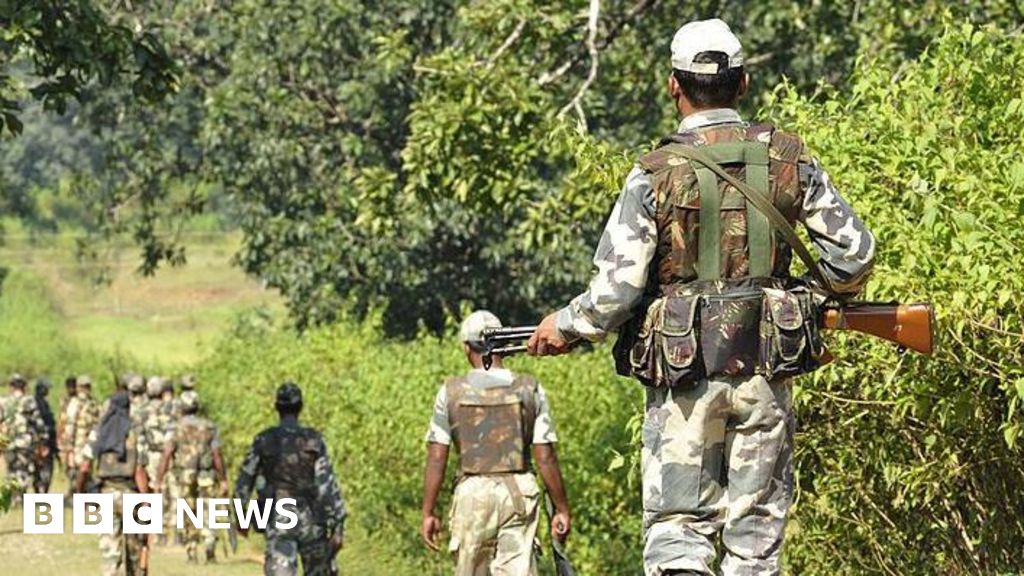ARTICLE AD BOX
By Sarah McDermott
BBC
Having worked as an entertainer on board cruise liners for many years, guitarist Moss went on to become a cruise director
When the luxury liner Oceanos started taking on water in rough seas during a voyage around the coast of South Africa in 1991, musician Moss Hills and his colleagues suddenly found themselves responsible for everyone on board.
It was during dinner that Moss Hills began to realise just how severe the storm was. The ship's waiters, normally completely adept at carrying drinks and food without spilling anything, were struggling. Moss, a guitarist from Zimbabwe working on board the cruise liner alongside his wife Tracy, a bass player, had never seen the waiters dropping trays before.
Earlier that day, gale-force winds and heavy rains had delayed sailing for the final leg of the cruise towards Durban several times. But with no sign of conditions improving, the captain eventually decided to lift anchor and the Oceanos, with 581 guests and crew on board, sailed off into 40-knot winds and 9m-high (30ft) waves.
Moss and Tracy, both in their 30s, would usually host parties up on the pool deck as the ship sailed away from port. But that day the party had been moved indoors, and Moss braced his body while he played his guitar, trying to keep his balance as the ship pitched and rolled.
"The storm just got worse and worse," Moss says.
At dinner, Tracy - who her husband describes as unflappable - decided to go to their cabin to organise an emergency bag, just in case.
"Off she went," Moss says, "and suddenly - boom - all the lights went out."
Tracy and Moss worked on cruise ships together for many years
When none of the ship's officers appeared to issue instructions, Moss, who was not easily frightened, began to feel uneasy.
"You're on a ship in the middle of the ocean, in the dark of night, in a terrible storm," he says, "I felt this tightening in my stomach."
When small, dim emergency lights came on, Moss went up to the lounge to check on the musical instruments on stage. Microphone and cymbal stands were strewn about. Then he suddenly realised he couldn't hear the constant, throbbing, background noise of the engines. The ship had lost power and was slowing down.
Soon the 153m (502ft) Oceanos was drifting sideways onto the crashing waves.
The ship, says Moss, was getting hammered.
Anxious guests began pouring into the lounge. Pot plants, ashtrays, and chairs were sliding around, and people had to move from their seats to sit on the floor as the ship lurched wildly from one side to the other, port to starboard.
About an hour passed, and the mood in the lounge grew tense. Moss grabbed an acoustic guitar and began singing with some of the other entertainers to try to keep people calm. But as time stretched on, Moss noticed that the ship was heeling - no longer coming back to a level position when it was being thrown about in the storm.
"Something bad is happening," Moss said to Tracy, "I'm going to try and find out what's going on."
Hear Moss tell his story in a new series of Life Changing on 6 April 2022 at 0900 on BBC Radio 4 - or listen to the podcast.
Hanging on to the handrails, Moss and another entertainer, Julian, a magician from Yorkshire, made their way through the darkness below deck. They could hear excited voices speaking many different languages. Officers were running around, some were carrying bags, some had life jackets on, and some were wet.
"Everyone was pretty wild-eyed and panicked-looking," Moss says. "We were trying to ask, 'What's happening?' but it was like we didn't exist."
Julian and Moss continued down to the engine room - the lowest part of the ship.
"We were way below the waterline, in the dark, on our own, and there was no-one there," Moss says. "That would never, ever happen, even when you're docked."
The thick, metal doors which acted as a safety barrier by preventing water moving from one compartment of a ship to another in the event of flooding, were tightly closed.
"But it sounded like there was a large body of water sloshing about behind those watertight doors," Moss says.
Some passengers in lifejackets sat on the floor, while others lined up for the lifeboats
Back up in the lounge, there had still not been any announcements about what was going on. Moss found the cruise director who said the captain had told her they were going to have to abandon the ship.
"Then we found out that one lifeboat had already gone with a lot of the crew and senior officers on it," he says.
Moss and the others had no idea how to evacuate a cruise ship, nor how to launch the lifeboats which hung high above the deck along each of the ship's sides, but there was nobody more qualified around to do it.
One by one, they began lowering the starboard side lifeboats down to the deck. They didn't know how to keep them steady as people got on, so Moss improvised by standing with one leg on the deck of the ship and the other on a lifeboat.
But each time the ship rolled to starboard, Moss would have to jump back onto the Oceanos before the lifeboat swung away, opening up a gap of a couple of metres, and then swung back, smashing with such force against the ship's hull that bits of it came splintering off.
Each heaving lifeboat, now with as many as 90 people in it, many screaming in fear, would then be lowered down to the sea on cables. But Moss had no idea how to start the engines or even where the keys were.
"We'd let them go, off into the night, and they would just drift away into the pounding waves," he says. "The people in the lifeboats had a torturous time - they were getting deluged in spray, it was cold and completely dark, but we just had to carry on until all of the starboard side lifeboats were launched."
One of the Filipino crew who had remained on board trying to lower a lifeboat hanging on the portside of the ship
By now the Oceanos was taking in more and more water and heeling markedly to its starboard side. Launching the remaining lifeboats on the port side safely was near impossible.
Instead of being lowered down to the water once loaded up with people, the lifeboats would cling to the side of the ship until the next big wave rolled in, tipping the ship enough to let them dangle freely.
"And then gravity would suddenly drop the lifeboat three or four metres (13 ft) in one go, almost tipping people out into the open water, it was horrific," Moss says.
Eventually, he realised it was too dangerous to continue.
"In the effort to try and rescue people we were possibly going to kill them," Moss says.
And time was running out.
Unable to launch any more lifeboats, but with hundreds of people still in need of rescue, Moss and others made their way up to the ship's bridge - where they assumed they would find the captain and the remaining senior officers - to ask what to do next.
"We looked inside, but there was no one there," Moss says. "That's when we realised - it's just us."
Orangey-red lights blinked in the darkness, but Moss had no idea what most of the equipment was for, never mind how it worked. They took turns trying to use the radio to send an SOS.
"I was calling, 'Mayday! Mayday! Mayday!' and just waiting for somebody to answer," Moss says.
A big, deep, rich voice eventually replied. "Yes, what is your Mayday?"
Relieved, Moss explained that he was on the cruise ship Oceanos and that it was sinking.
"OK. How long have you got left to float?"
"I don't know - we've got the starboard railings in the water, we're rolling around, we've taken on a huge amount of water," Moss said. "We still have at least 200 people on board."
"OK. What is your position?"
"We're probably about halfway between the port of East London and Durban."
"No, no, no, what are your coordinates?"
Moss had no idea what their coordinates were.
"Well, I'm not a rank - I'm a guitarist."
"What are you doing on the bridge?"
"Well, there's nobody else here."
"Who's on the bridge with you?"
"So I said, 'It's me, my wife - the bass player, we've got a magician here…'"
Moss was put in contact with two small ships that were close to the Oceanos. They told Moss to find the captain and get him onto the bridge. But Moss had no idea where he was.
"I knew he wouldn't be down below because we were sinking," he says. "I was making regular checks to see where the water level was, and one deck below us was flooded."
Eventually, Moss found the captain, right at the back of the ship, smoking in the darkness. Moss explained that they needed his help - urgently.
"He was just looking at me, wide-eyed and vacant, saying, 'It's not necessary, it's not necessary,'" Moss says.
"I think he was in deep, deep shock."
The two ships close to the Oceanos had only one lifeboat each, so there was little they could do to help. They shared the sinking vessel's coordinates with the South African authorities who began to organise an air rescue mission.
Moss and Tracy were among the last people to be airlifted to safety
As the storm continued to batter the ship, Moss and Tracy sat together in the near darkness, praying that help would arrive before it was too late.
"I think the ship is going to go down and it's very likely we're going to go down with it," Moss said to his wife.
He and Tracy had a 15-year-old daughter, Amber, who'd been on board the Oceanos for the holidays and disembarked just days earlier. Amber was now back at boarding school in South Africa.
"She can't lose both parents," Moss remembers saying. "Whatever we do, we've got to make sure at least one of us gets off."
As dawn broke, the first of two navy divers attempted to get down to the Oceanos in strong winds
More than three hours passed before the first rescue helicopter arrived and hovered above the ship.
Two navy divers were winched down to the Oceanos' deck. They said they needed help to get everyone off before the ship sank, and Moss was given a five-minute crash course on how to run a helicopter airlift.
"Remember, the harness needs to be quite tight under people's underarms," the navy diver told him. "Make sure you get it right because otherwise they'll tip upside down and fall out - you'll kill them on the deck. Do two at a time or else we're going to run out of time. OK? Go."
One navy diver went to organise the helicopter rescue at the rear of the ship and Tracy and Moss were to organise a second at the front. But as the ship sank ever lower beneath the waves, people began jumping off the steeply pitching deck in panic and a rigid inflatable had to be launched into the churning sea to rescue them.
Dangling in mid-air from the helicopter cable, people who Moss was trying to save were being blown against parts of the ship by the strong winds as they were winched into the sky. There was no way of knowing how badly hurt they were and Moss momentarily lost his nerve. But with so many people still on board, he realised he had no choice but to keep going.
In total, five helicopters joined the rescue mission, shuttling back and forth, carrying 12 people at a time to safety as dawn broke and the darkness lifted.
Drained and exhausted, Moss and Tracy were among the last to be strapped into harnesses.
"As we were hovering above the ship it really hit me," Moss says, "I could see the Oceanos was in a critical situation. We could see waves breaking over the bow where we had been rescuing people."
When the helicopter carrying Moss touched down on the grass, cruise passengers ran towards him singing and cheering, and reaching out to hug him.
"I started to choke up and sob," Moss says, "and then I collapsed."
Image source, Getty Images
Image caption,Sun loungers, life jackets and other debris tumbled off the deck and floated on the surface of the water before the ship finally disappeared
On 4 August 1991, about 45 minutes after the last person on board had been airlifted to safety, the Oceanos slipped away below the water. Everyone who had been put into lifeboats was rescued by passing ships and remarkably no lives were lost.
Moss and Tracy continued working as cruise ship entertainers for many years, but even now, three decades later, Tracy prefers not to talk about the sinking or dwell on how close they all came to losing their lives.
But Moss, who's been asked about the Oceanos many, many times, finds it cathartic to talk about. He looks back on what happened with great relief.
"I'm not invincible," Moss says, "but if I can get through that, I can get through anything."
There was an inquiry in Greece which found the captain of the Oceanos and four other senior officers negligent in the ship's sinking.
All images courtesy of Moss Hills, unless otherwise stated.
Listen to Moss Hills on Life Changing - producer Thomas Harding Assinder
Do you have an extraordinary story to tell? Email lifechanging@bbc.co.uk
You may also be interested in:
In early 2018, Greek pilot Vasileios Vasileiou checked into a luxury hilltop hotel in Kabul. The Intercontinental was popular with foreign visitors - which is why, on 20 January, Taliban gunmen stormed it, killing at least 40 people. Vasileios explains how he survived.

 3 years ago
40
3 years ago
40








 English (US) ·
English (US) ·